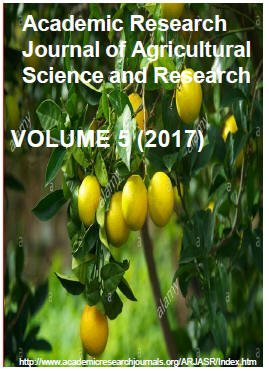| ARJASR |
Academic Research Journal of
Agricultural Science and Research |
||||||||||||||||||||||
|
Academic Research Journal of Agricultural Science and Research Vol. 5(3), pp. 176-185. May, 2017. ISSN: 2360-7874 DOI: 10.14662/ARJASR2017.013 Full Length Research Review on Major Feed Resources in Ethiopia: Conditions, Challenges and Opportunities
Alemayehu Mengistu1, Gezahagn Kebede2, Fekede Feyissa2 and Getnet Assefa3 1Forage and Rangeland Scientist, Urael Branch, P.O. Box 62291, Addis Ababa, Ethiopia 2Holetta Agricultural Research Center, P.O.Box 31, Holetta, Ethiopia 3Ethiopian Institute of Agricultural Research P. O. Box. 2003, Addis Ababa, Ethiopia Corresponding author: gezk2007@yahoo.co.uk
Accepted 2 April 2017
Feed both
in terms of quantity and quality is a major bottleneck for livestock
production in Ethiopia. Feed resources can be classified as natural
pasture, crop residue, improved forage and agro-industrial byproducts of
which the first two contribute the largest share. Currently, with the
rapid increase of human population and increasing demand for food,
grazing lands are steadily shrinking by being converted to arable lands,
and are restricted to areas that have little value. Productivity
estimates also vary probably due to variation in time and ecological
change, rainfall, soil type and cropping intensity. Research and
development testing over the last two decades identified promising
forages that are suitable for pasture rehabilitation in a wide range of
agro-ecological zones. Food crop residues are providing a considerable
quantity of dry season feed in most farming areas of the country.
However, crop residues are the fibrous byproducts and their feeding
value are limited by their poor voluntary intake, low digestibility and
low nitrogen, energy, mineral and vitamin contents. Agro-industrial
byproducts have special value in feeding livestock mainly in urban and
peri urban livestock production system, as well as in situations where
the productive potential of the animals is relatively high and require
high nutrient supply. Over the past four decades, several forages have
been tested in different agro-ecological zones, and considerable efforts
have been made to test the adaptability of different species of pasture
and forage crops under varying agro-ecological conditions. Yield of
improved forage grasses, legumes and tree legumes ranged from 6-8, 3-5
and 10-12 DM ton/ha respectively. The major challenges of pasture and
forage resources are feed quality and quantity, ecological
deterioration, overgrazing, land tenure, border conflict, drought, weed
and bush encroachment, soil fertility, lack of seed and planting
materials and irrigation. Ethiopia has an immense ecological diversity
and a huge wealth of biological resources. The complex topography
coupled with environmental heterogeneity offers suitable environments
for pasture species, herbaceous legumes and browse trees/shrubs.
Therefore, assessing the conditions, challenges and opportunities of the
major feed resources is a paramount important for effective and
efficient utilization of the resources to enhance the productivity of
the livestock sector in the country. How to cite this article: Mengistu A, Kebede G, Feyissa F, Assefa G (2017). Review on Major Feed Resources in Ethiopia: Conditions, Challenges and Opportunities. Acad. Res. J. Agri. Sci. Res. 5(3): 176-185
|
|
|||||||||||||||||||||
